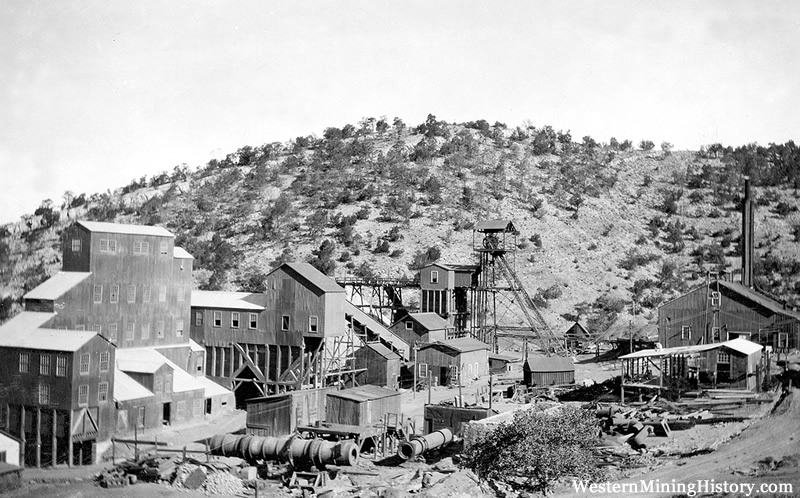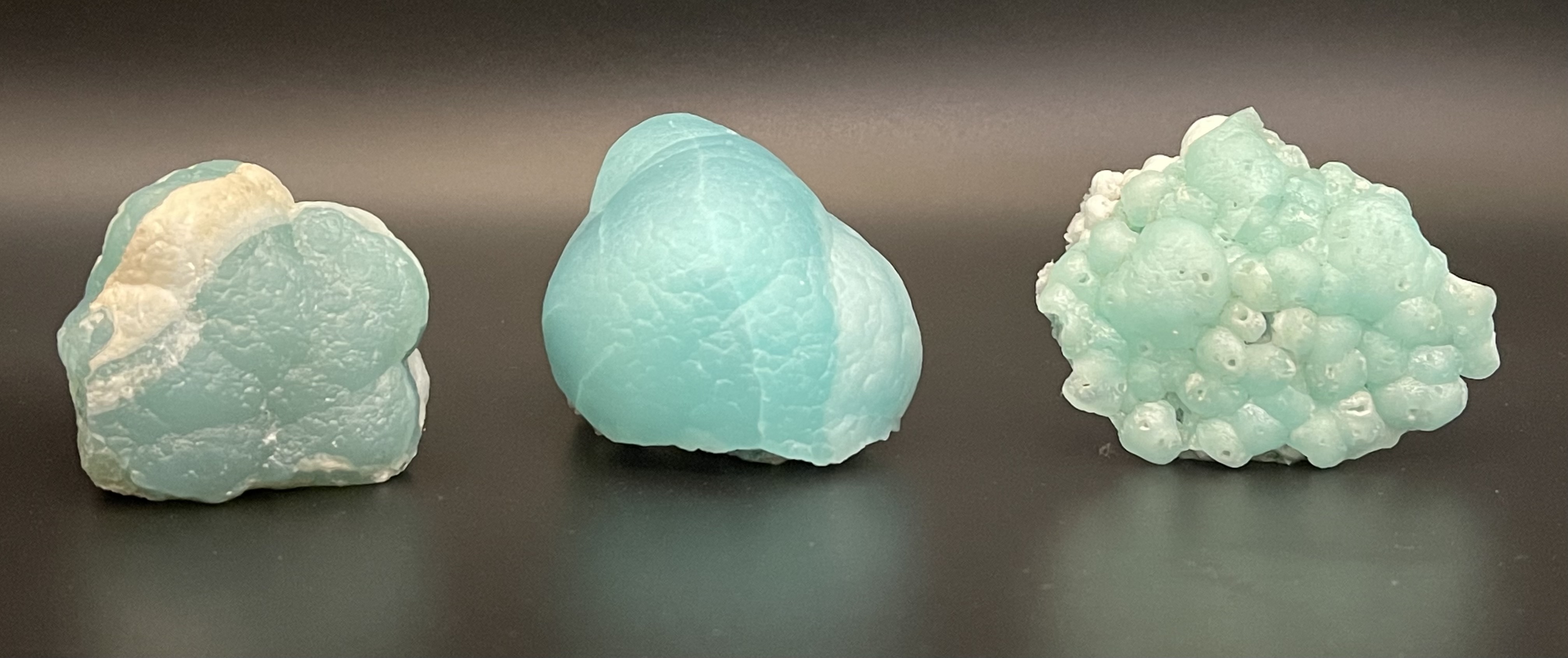The Story of Smithonite
The Story of the Blue and Green Smithsonite from the Kelly Mining District.
Smithsonite is a native Zinc carbonate and is ordinarily colorless or white, but can come in many colors depending on the compounds contained in the mineral. Smithsonite, which received its name in honor of the Smithsonian Institute scientist that identified the substance, can be found in many mines around the world where Zinc ore is present. The unique blue-green colored smithsonite can only be found in the now closed Kelly Mining District. Unlike smithsonite found in other parts of the world, smithsonite found in the Kelly Mining District contains copper salt, which gives it its rare and beautiful greenish-blue color. Because of this, and other geological phenomena, the Smithsonite found in the Kelly Mining District is some of the only Jeweler’s grade Smithsonite known to exist in the world. The last active Smithsonite producing mine in the Kelly Mining District closed in 1952, making the unique mineral hard to come by. During the 1920s, it became apparent that most of the smithsonite deposits had been exhausted. With the closure of the last mine, coupled with a higher set of standards in mining safety, there is little chance that conditions will warrant the opening of any mines within the district. The smithsonite that may still be present in the depths of the Kelly mine district is, in all probability, there to stay.

(The Kelly Mining District during its hey day)
For years, Miners in the Kelly Mining District had mined alongside smithsonite while grubbing out millions of dollars worth of silver and lead ores. They tossed it upon their ore dumps along with worthless rocks and rubble. Fortunately, one man, Cony T. Brown of Socorro, New Mexico, became curious about these discarded dumps. In the 1890s, he shipped a few samples of this mysterious rock away for assay to a smelter in Missouri. When the results came back, Brown quietly set out to lease the Graphic Mine, from whose dumps he had gathered the samples for assay. The long-ignored green and blue rock turned out to be a rare and valuable mineral. Then, when almost all the lead and silver mine's production failing, there was Smithsonite.

Very little top grade smithsonite is available to jewelers and collectors today. Most of the existing mineral appears to be in the hands of a small group of locals, private collectors, and Museums. The beauty and scarcity of this rare mineral has caused the market value to skyrocket over the decades. Due to its unique rarity and the unlikelihood of the Kelly Mining District ever opening for mining again, individuals possessing articles of jewelry made from this rare mineral, own an article far more scarce than gold or diamonds.
